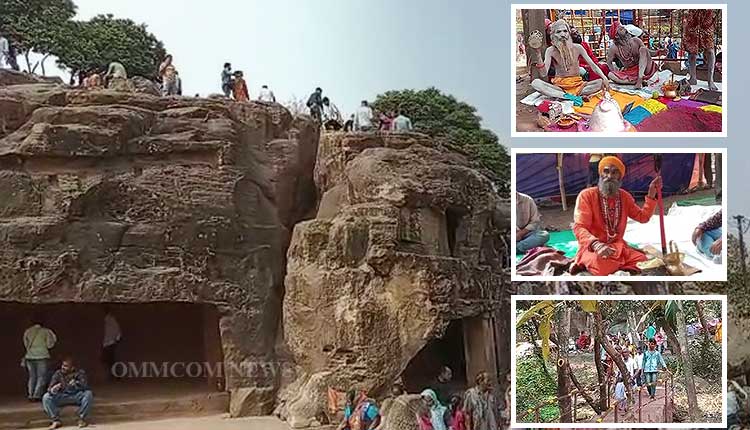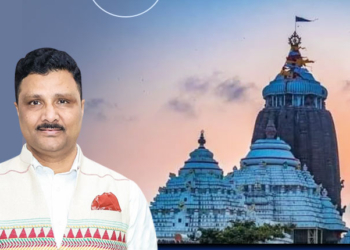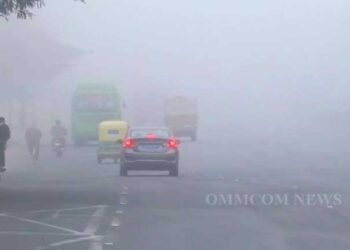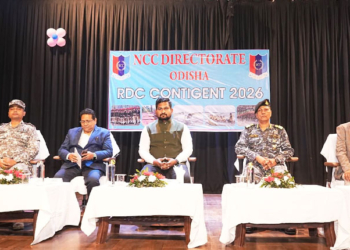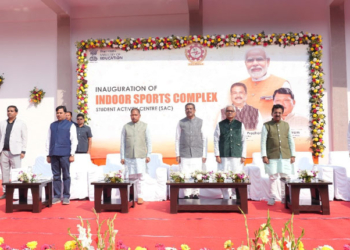Bhubaneswar: The annual nine-day-long Khandagiri Kumbha Mela has begun at the foothills of Khandagiri and Udaygiri hills in Bhubaneswar. The fair takes off every year on the occasion of Magha Saptami, the seventh day of the second quarter of the holy month Magha, which falls on February 4, this year.
As the seventh day of the holy month of Magha dawns, the atmosphere is electric with anticipation. Sadhus from revered pilgrimage sites like Kashi, Benaras, and Ayodhya begin to arrive, their presence imbuing the surroundings with an aura of spirituality.
With the sun climbing higher in the sky, the sadhus make their way to Khandagiri, where the yajna, or the lighting of the holy fire, is conducted with great fanfare. The air is filled with the sweet scent of incense and the chanting of ancient mantras, as the faithful gather around the sacred flame.
As dusk approaches, locals from Jagamara, a settlement at the foothills of Khandagiri, take out a procession with the deity of Lord Anant Keshari in a palanquin and walk to the Udaygiri foothills.
Many of these sadhus take a holy dip early on Magha Saptami morning at the Chandrabhaga beach in Konark and then proceed towards Khandagiri to participate in the rituals of the lighting of the holy fire (yajna), conducted at the Khandagiri foothills.
Legend
There is a profound reason why saints and devotees flock to Khandagiri after purifying themselves with holy dips in Chandrabhaga. According to ancient lore, Samba, the son of Lord Krishna, followed this very ritual to cure himself of leprosy, finding solace and healing in the sacred hills of Khandagiri.
According to ancient Hindu mythology, Samba, the son of Lord Krishna, suffered from leprosy as a result of a curse from the revered sage Durvasa. The curse was a punishment for Samba’s disrespect towards the sage. Seeking redemption and a cure, Samba worshipped Surya Dev, the Sun God, and bathed in the sacred waters of Chandrabhaga.
He then retreated to the serene hills of Khandagiri and Udayagiri, where he meditated and ultimately found healing. This transformative experience has been etched in the annals of Hindu mythology, rendering Khandagiri and Udayagiri as sacred sites of spiritual rejuvenation.
To this day, sadhus and devotees from far and wide, including Odisha and beyond, converge on these hills to immerse themselves in the profound spirituality that pervades the air. The site has become a beacon of hope and healing, drawing those seeking solace, redemption, and enlightenment.
The fair transcends its spiritual significance, unfolding as a kaleidoscopic celebration of Odisha’s diverse cultural and artistic traditions. A sprawling marketplace becomes a treasure trove of the state’s exquisite handicrafts, showcasing intricate appliqué work, delicate handmade pottery, and other artisanal wonders.




